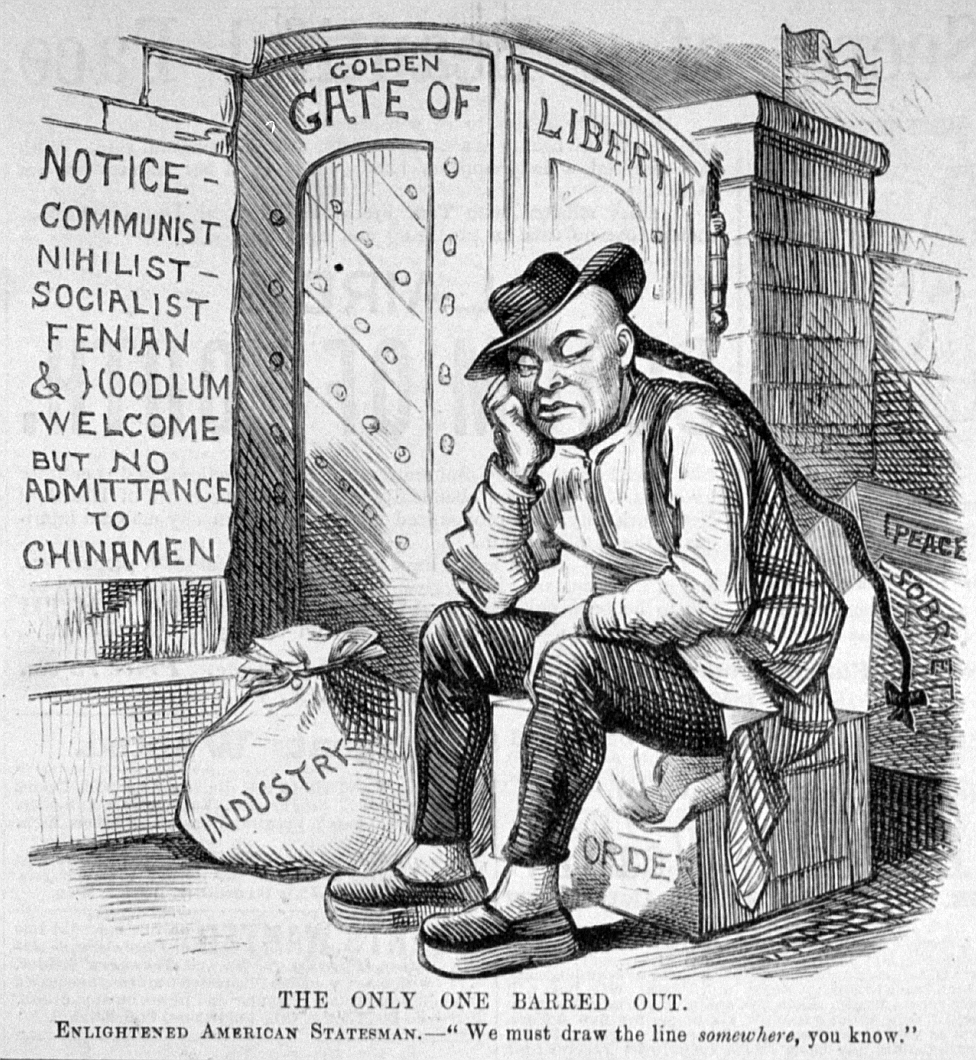
History of U.S. Immigration Policies
Outlined below are thumbnail sketches of immigration-related legislation adopted between 1790 and 1990. More detailed information on the most recent legislative changes, beginning in 1952, are also available separately.
1790
In an area previously controlled by individual states, an act was adopted that established a uniform rule for naturalization by setting the residence requirement at two years.
1819
Congress enacted the first significant federal legislation relating specifically to immigration. Among its provisions, it: (1) established the continuing reporting of immigration to the United States; and (2) set specific sustenance rules for passengers of ships leaving U.S. ports for Europe.
1864
Congress first centralized control over immigration under the Secretary of State with a Commissioner. The importation of contract laborers was legalized in this legislation.
1875
Direct federal regulation of immigration was established by a law that prohibited entry of prostitutes and convicts.
1882
The Chinese exclusion law curbed Chinese immigration. Also excluded were persons convicted of political offenses, lunatics, idiots, and persons likely to become public charges. The law placed a head tax on each immigrant.
1885
Admission of contract laborers was banned.
1888
Provisions were adopted–the first since 1798–to provide for expulsion of aliens.
1891
The Bureau of Immigration was established under the Treasury Department to federally administer all immigration laws (except the Chinese Exclusion Act).
1903
Immigration law was consolidated. Polygamists and political radicals were added to the exclusion list.
1906
Procedural safeguards for naturalization were enacted. Knowledge of English was made a basic requirement.
1907
A bill increased the head tax on immigrants, and added people with physical or mental defects or tuberculosis and children unaccompanied by parents to the exclusion list. Japanese immigration became restricted.
1917
Added to the exclusion list were illiterates, persons of psychopathic inferiority, men as well as women entering for immoral purposes, alcoholics, stowaways, and vagrants.
1921
The first quantitative immigration law was adopted. It set temporary annual quotas according to nationality. A book review of Not Like Us: Immigrants and Minorities in America, 1890-1924, which discusses this period is available here.
1924
The first permanent immigration quota law established a preference quota system, nonquota status, and consular control system. It also established the Border Patrol.
1929
The annual quotas of the 1924 Act were made permanent.
1943
Legislation provided for the importation of agricultural workers from North, South, and Central America–the basis of the “Bracero Program.” At the same time the Chinese exclusion laws were repealed.
1946
Procedures were adopted to facilitate immigration of foreign-born wives, fiance(e)s, husbands, and children of U.S. armed forces personnel.
1948
The first U.S. policy was adopted for admitting persons fleeing persecution. It permitted 205,000 refugees to enter the United States over two years (later increased to 415,000).
1950
The grounds for exclusion and deportation of subversives were expanded. All aliens were required to report their address annually.
1952
The multiple laws which governed immigration and naturalization to that time were brought into one comprehensive statute. It (1) reaffirmed the national origins quota system, (2) limited immigration from the Eastern Hemisphere while leaving the Western Hemisphere unrestricted, (3) established preferences for skilled workers and relatives of U.S. citizens and permanent resident aliens; and (4) tightened security and screening standards and procedures.
1953
The 1948 law was increased to admit over 200,000 refugees above the existing limit.
1965
The national origins quota system was abolished. But still maintained was the principle of numerical restriction by establishing 170,000 Hemispheric and 20,000 per country ceilings and a seven-category preference system (favoring close relatives of U.S. citizens and permanent resident aliens, those with needed occupational skills, and refugees) for the Eastern Hemisphere and a separate 120,000 ceiling for the Western Hemisphere.
1976
The 20,000 per-country immigration ceilings and the preference system became applied to Western-Hemisphere countries. The separate Hemispheric ceilings were maintained.
1978
The separate ceilings for Eastern and Western Hemispheric immigration were combined into one world-wide limit of 290,000.
1980
The Refugee Act removed refugees as a preference category and established clear criteria and procedures for their admission. It also reduced the world-wide ceiling for immigrants from 290,000 to 270,000.
1986
The Immigration Reform and Control Act (IRCA) was a comprehensive reform effort. It (1) legalized aliens who had resided in the United States in an unlawful status since January 1, 1982, (2) established sanctions prohibiting employers from hiring, recruiting, ar referring for a fee aliens known to be unauthorized to work in the United States, (3) created a new classification of temporary agricultural worker and provided for the legalization of certain such workers; and (4) established a visa waiver pilot program allowing the admission of certain nonimmigrants without visas.
Separate legislation stipulated that the status of immigrants whose status was based on a marriage be conditional for two years, and that they must apply for permanent status within 90 days after their second year anniversary.
1989
A bill adjusted from temporary to permanent status certain nonimmigrants who were employed in the United States as registered nurses for at least three years and met established certification standards.
1990
Comprehensive immigration legislation provided for (1) increased total immigration under an overall flexible cap of 675,000 immigrants beginning in fiscal year 1995, preceded by a 700,000 level during fiscal years 1992 through 1994, (2) created separate admission categories for family-sponsored, employment-based, and diversity immigrants, (3) revised all grounds for exclusion and deportation, significantly rewriting the political and ideological grounds and repealing some grounds for exclusion, (4) authorized the Attorney General to grant temporary protected status to undocumented alien nationals of designated countries subject to armed conflict or natural disasters, and designated such status for Salvadorans, (5) revised and established new non-immigrant admission categories, (6) revised and extended through fiscal year 1994 the Visa Waiver Program, (7) revised naturalization authority and requirements, and (8) revised enforcement activities.


